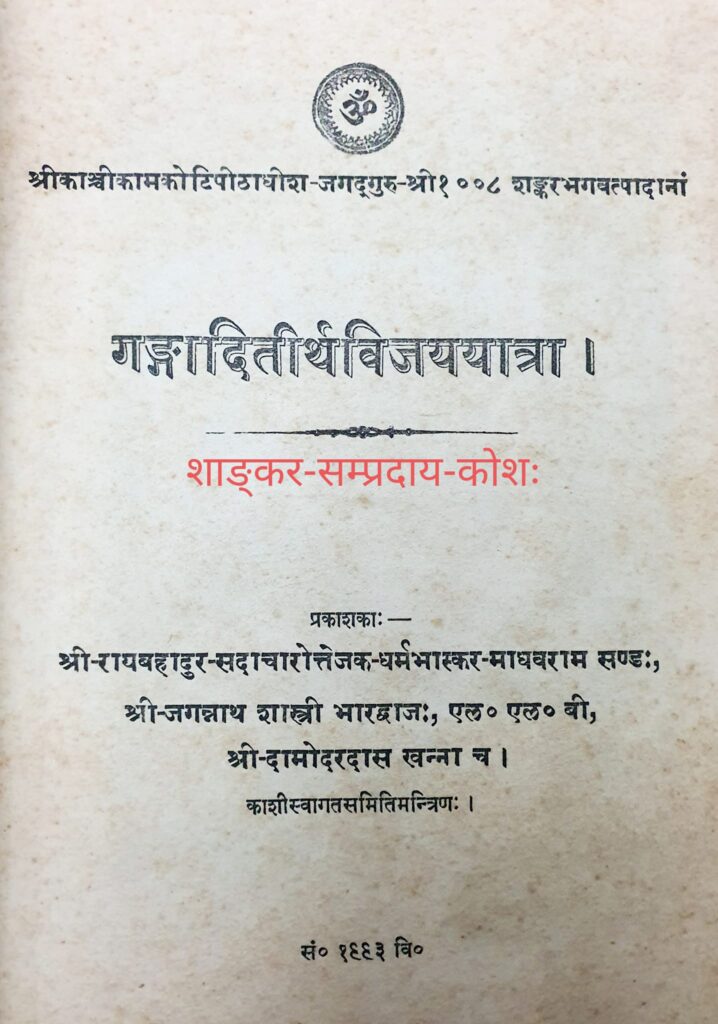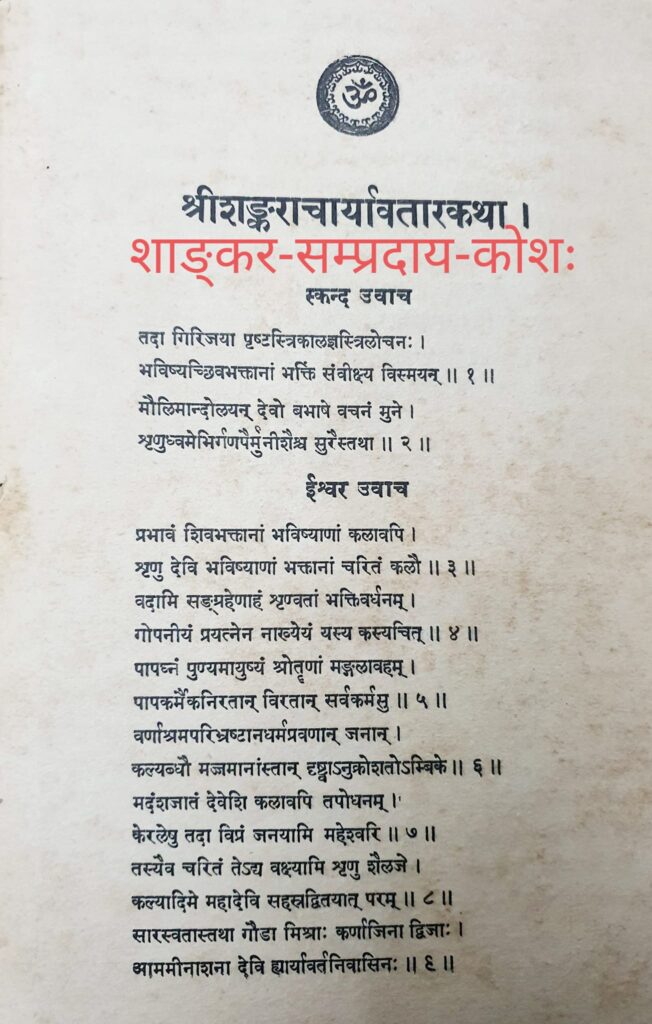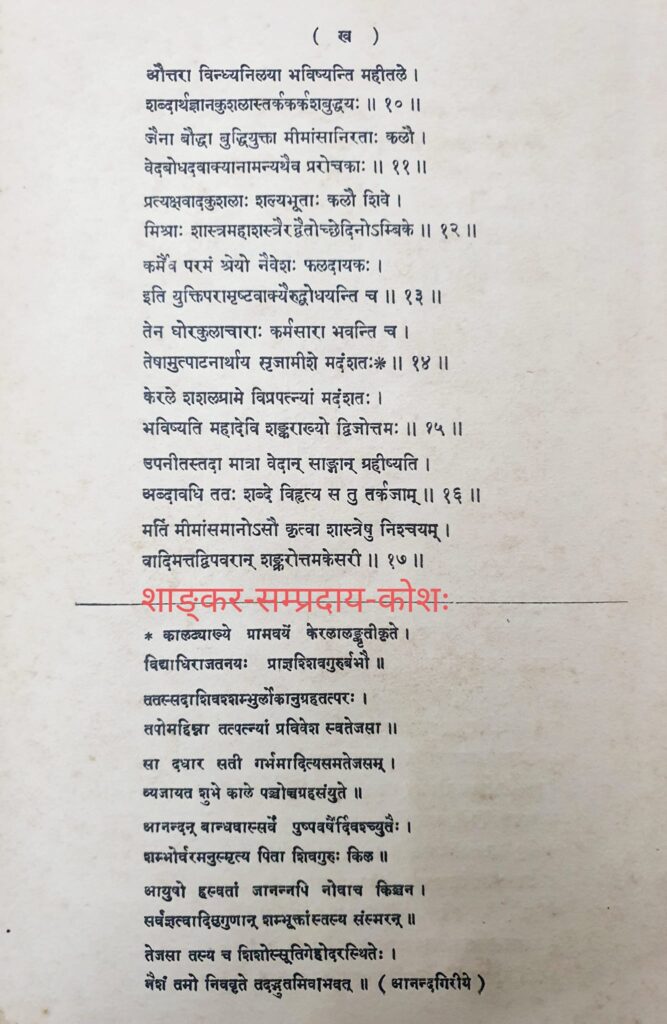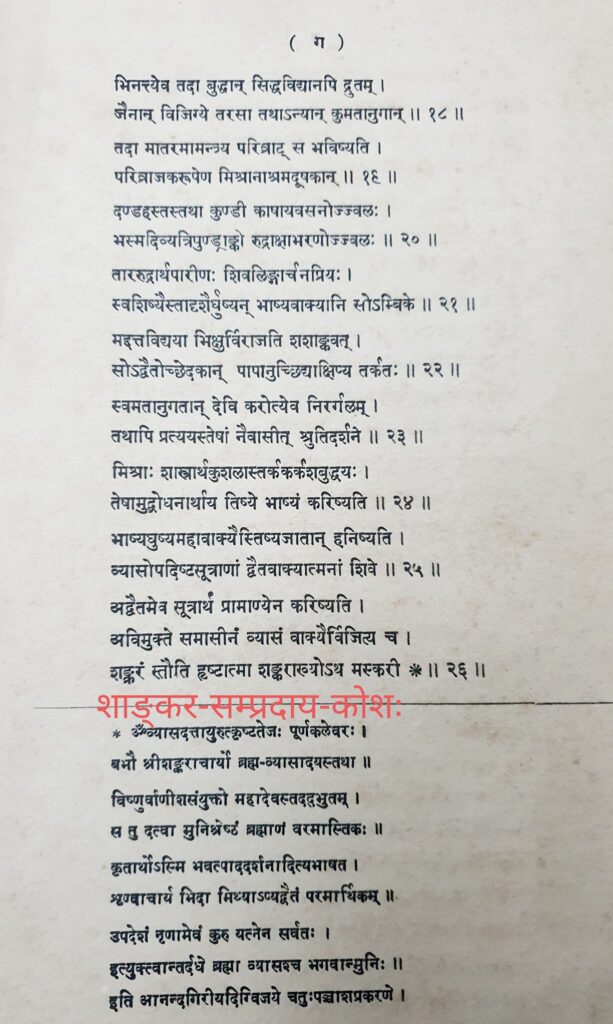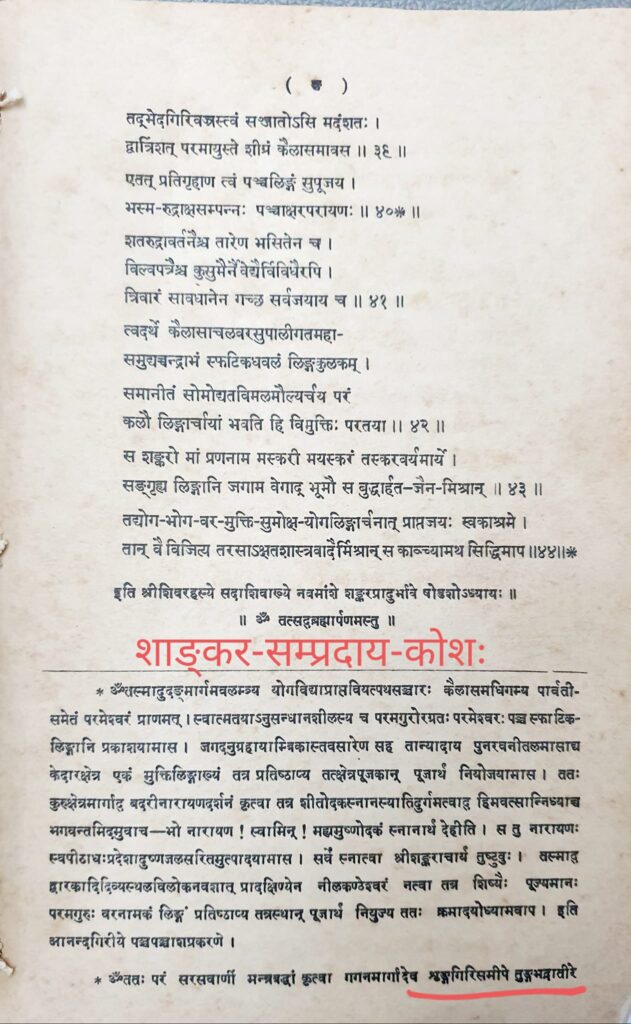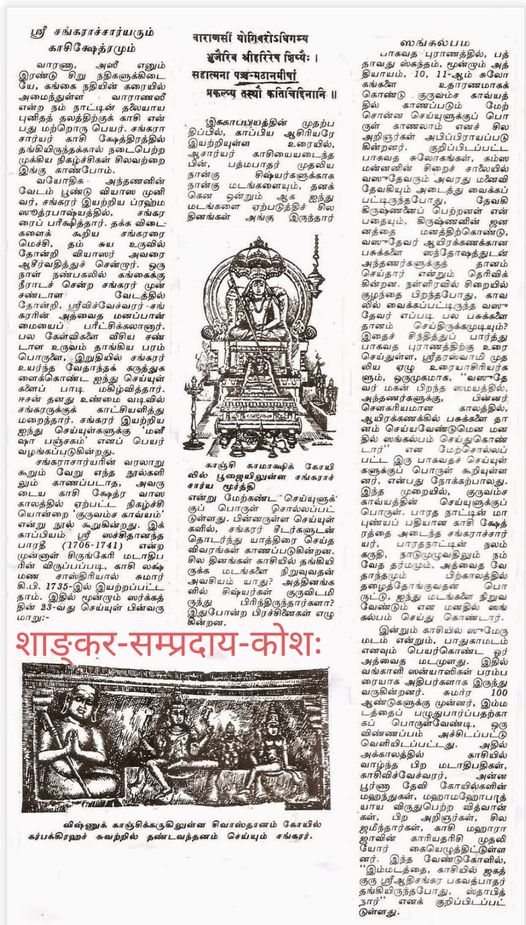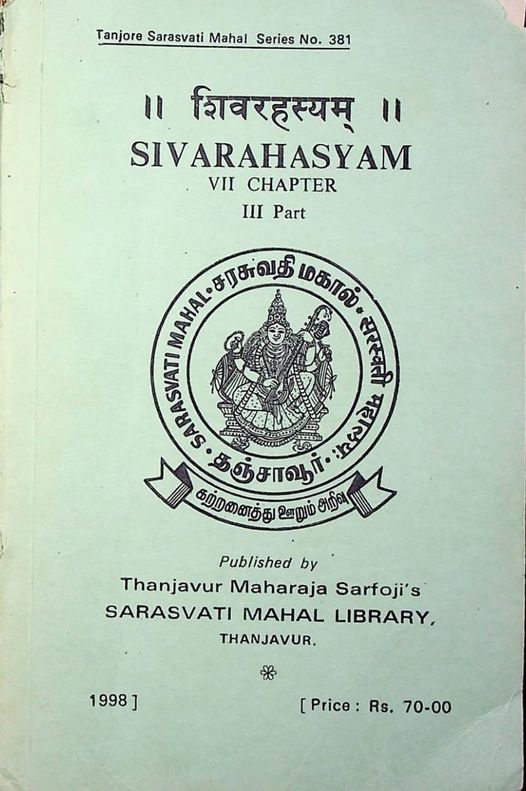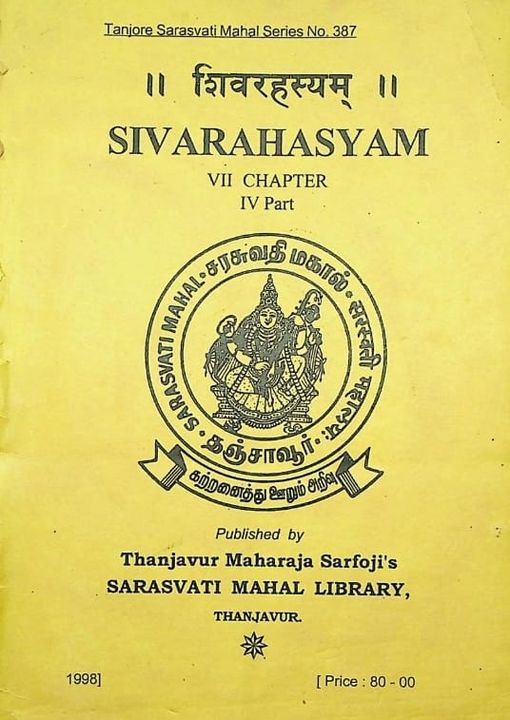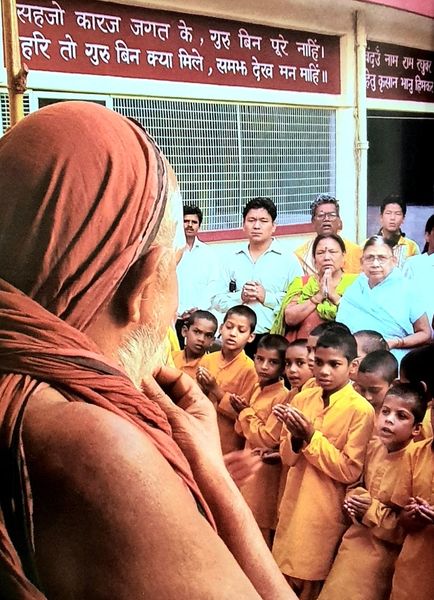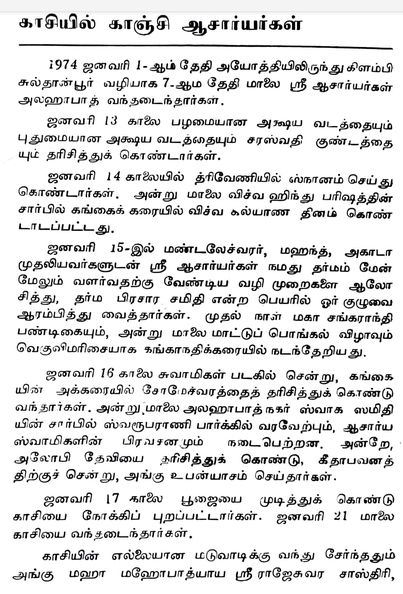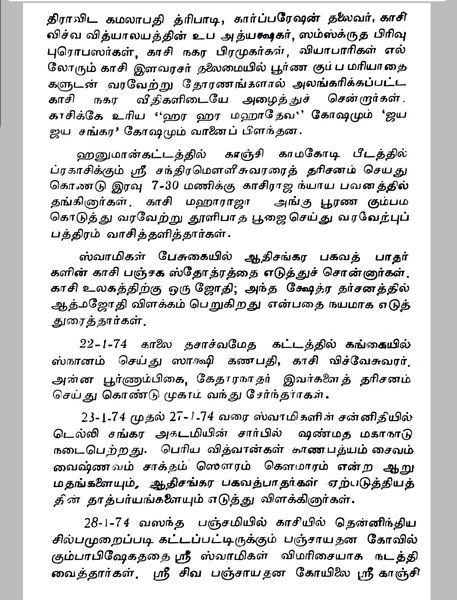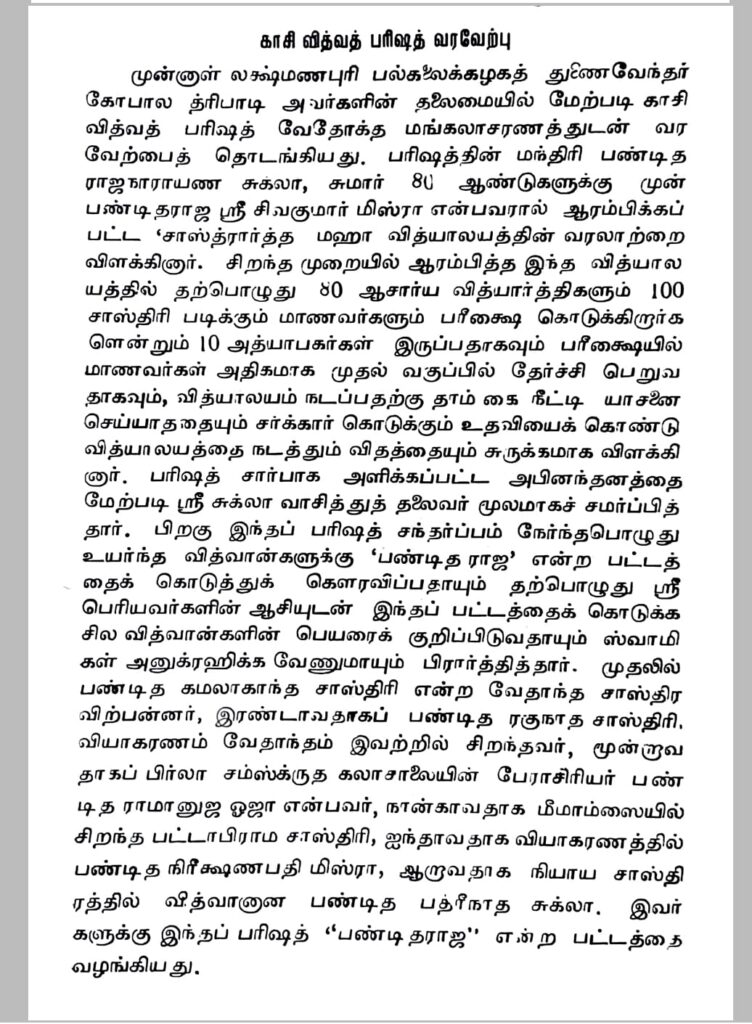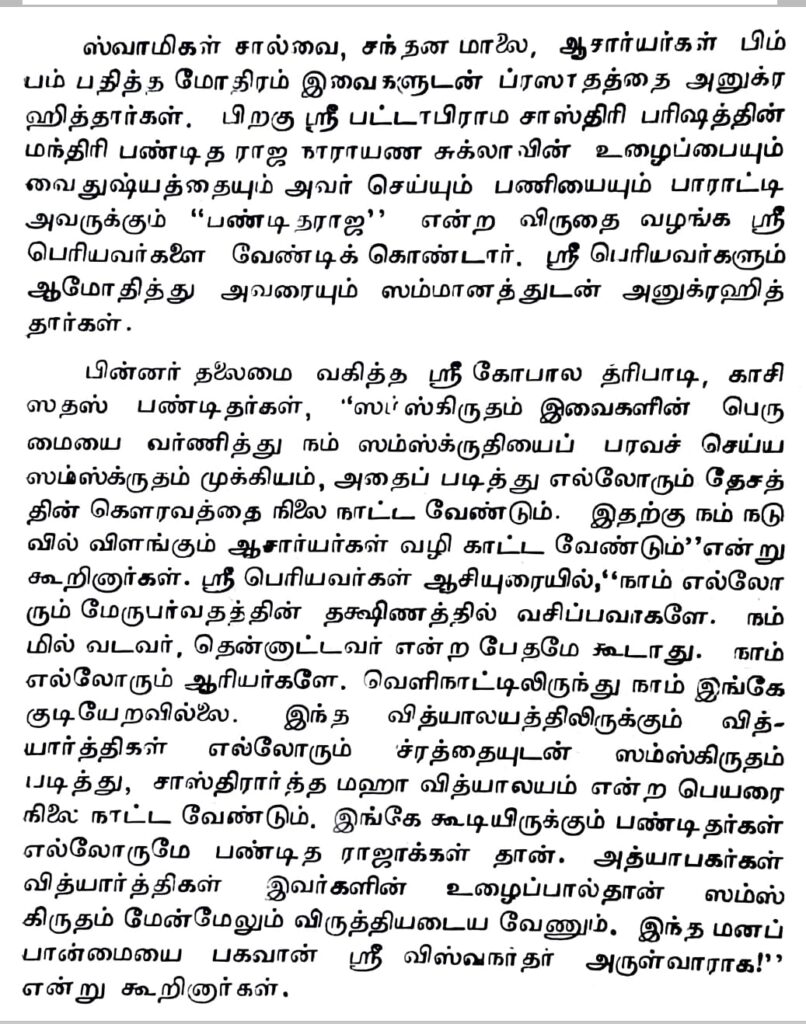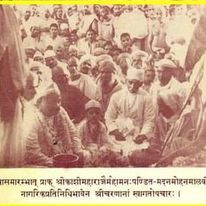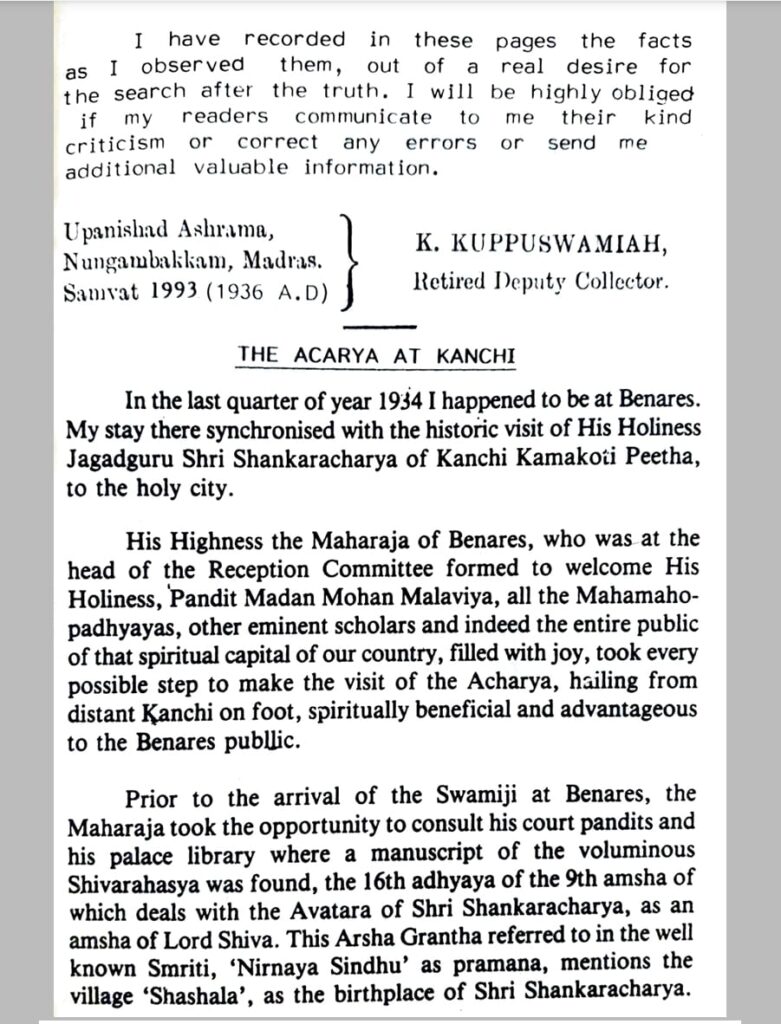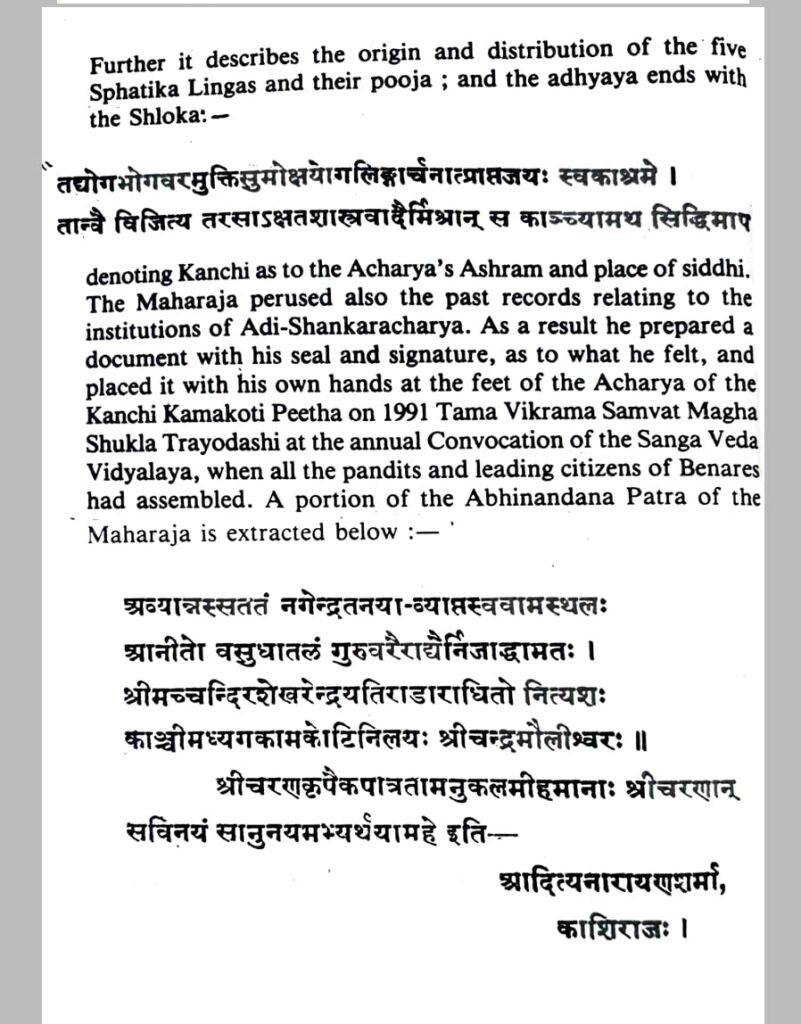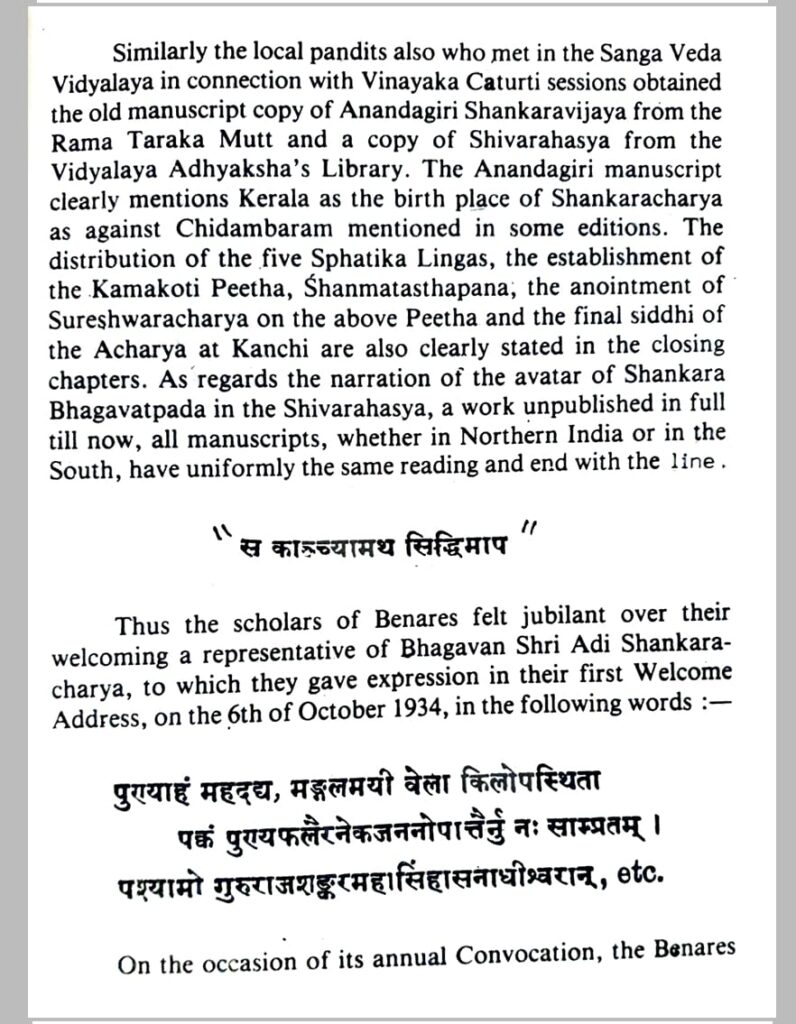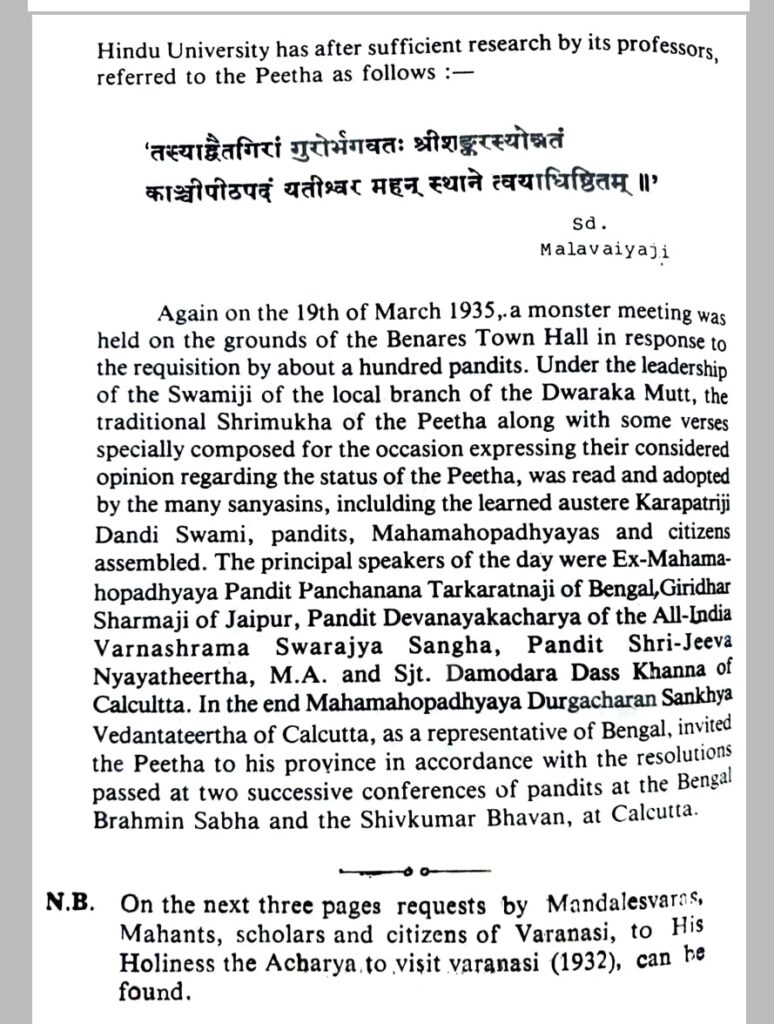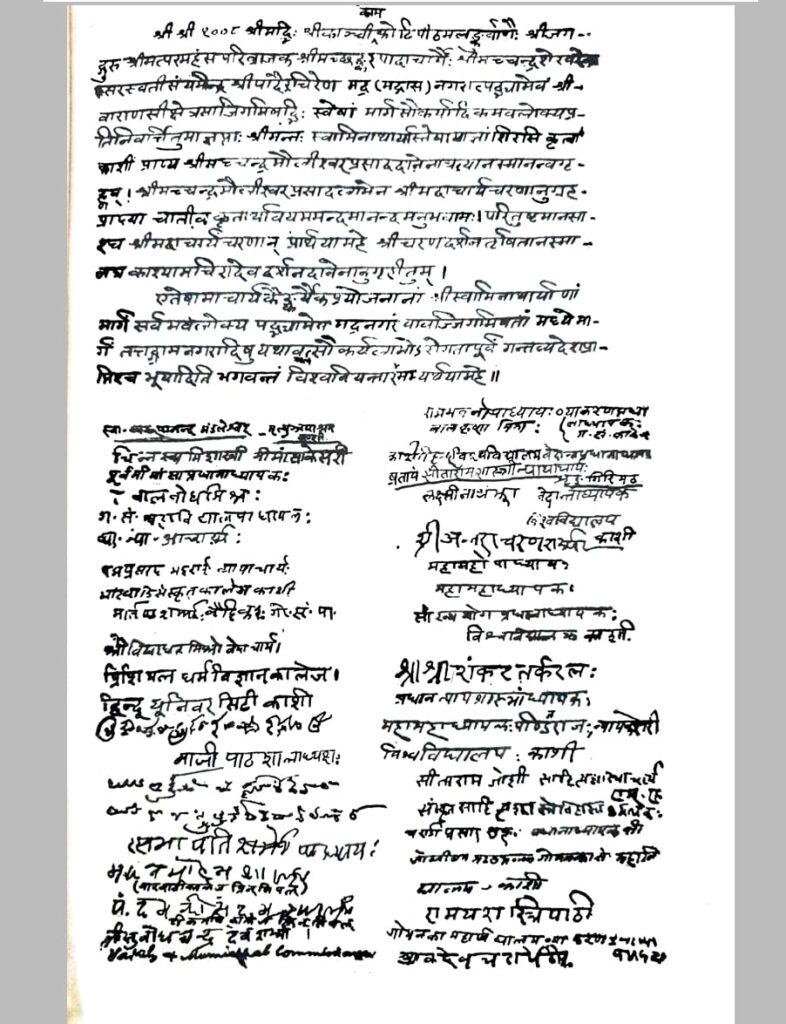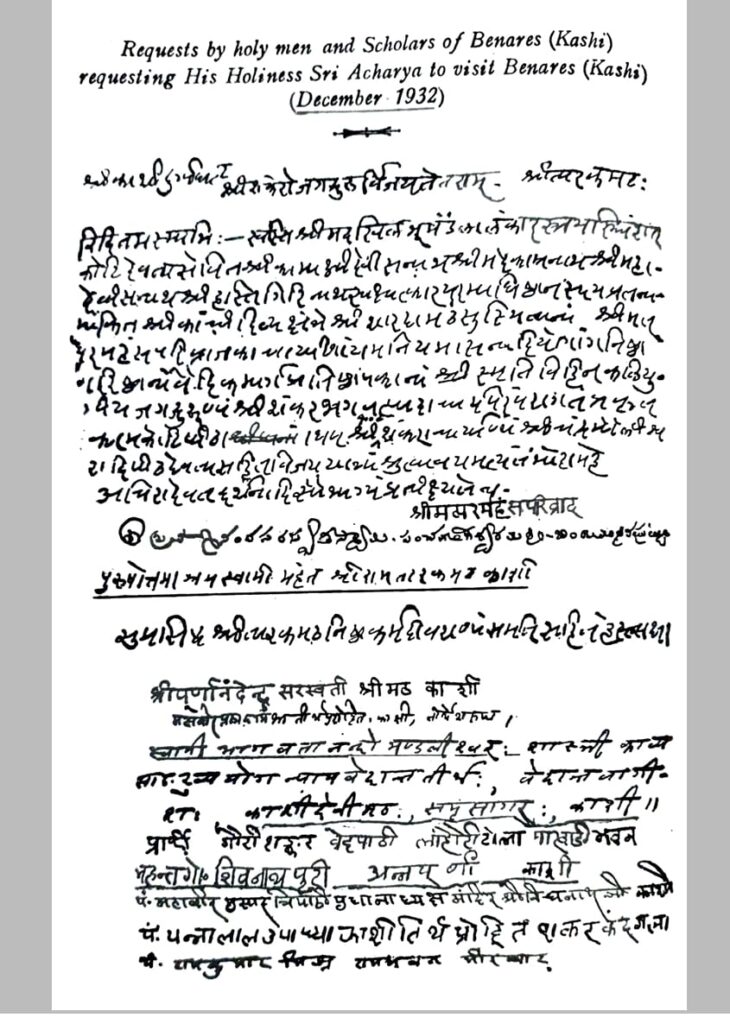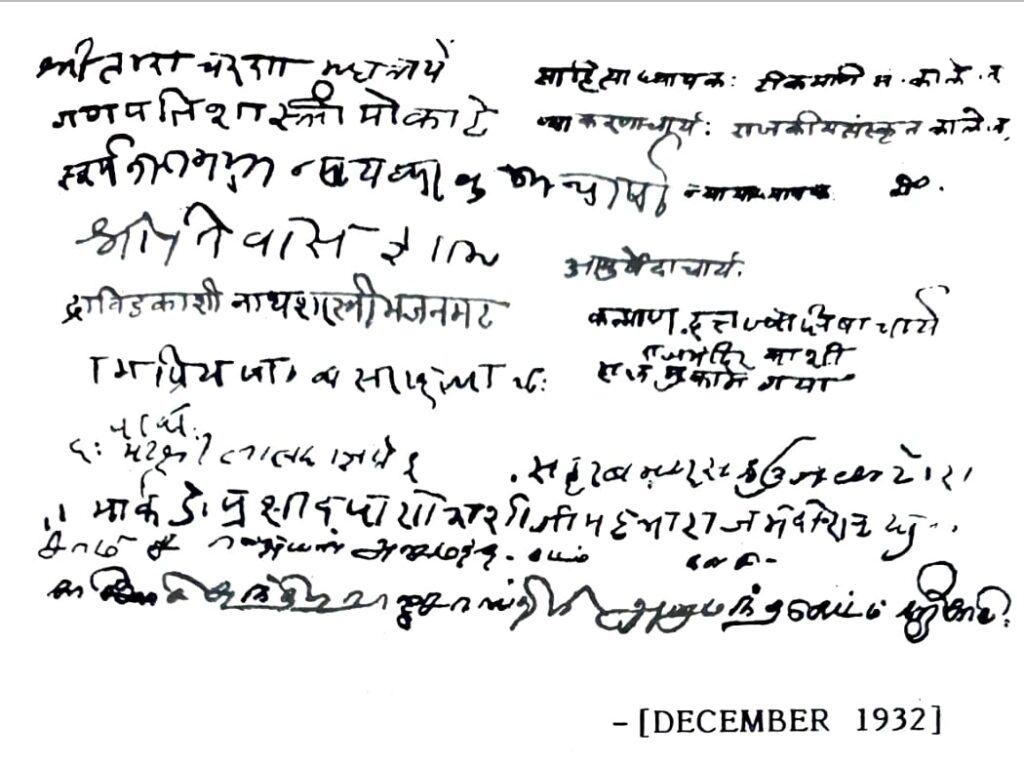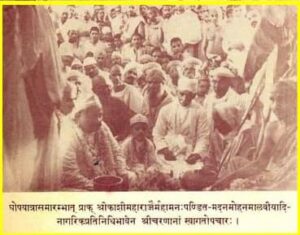English Translation of Samskrtam article by
Panditaraja Pattabhirama Shastri, Vidyavachaspati, Varanasi, Part-1
From the time of Parameshvara’s first srshti unto this minute, Bharatadesha is counted amongst the most sacred. What may be the reason for this?
Even if the parabrahma is devoid of qualities, form or blemish, and is truly sacchidananda, it takes various forms with various names at various times due to the divine lila, in order to establish dharma and punish the evil, incarnating in various places on earth in the forms such as Rama, Krishna and Nrsimha and walks all over Bharatabhumi thus sanctifying it. Further creating men of great wisdom and the seers of the darshanika tattvas and philosophical systems such as Vyasa, Jaimini, Kapila and Gautama enriching the mind and intellect of human beings.
With the ocean of Vedas, which was the primary cause for creation, establishing granthas for countless shrauta and smarta karmanushthana for the welfare and conduct of this world, and sages such as Apastamba – Katyayana- Baudhayana- Latyayana Maharshis were the cause of the greatness and glory of Bharata Mata. Vyasa and Markandeya Maharshis wrote countless puranas writing many things worthy of practising and following thus proclaiming the fame for Bharata’s itihasa. Smrtinibandhanakaras such as Manu and Yajnavalkya codified rules for the society enabled human beings to live in an orderly manner knowing their limits.
The crest jewels of Bharata – poets such as Bhasa, Kalidasa and and Bhavabhuti enriched and propagated Samskrta literature.
Sacred rivers such as Ganga, Krishna and Godavari and tirthas worshipped by Maharshis flow across Bharata bhumi sanctifying her. Various temples, sthalas, tirthas and Pithas that increase the spiritual shakti illuminate the eminence of Bharatadesha. Such being the case and reasons for its glory, what is to doubt the preeminence of Bharatadesha? It is true that it is due to the great fruition of our purvapunya that we were born in this sacred nation.
In this renowned Bharatadesha, there are some that are kshetras, some tirthas and some Pithas. Wherever we set our eyes on, we experience in these great temples the presence of devatas, the living of yogis, mahatmas and great devotees, the people whose hearts are purified by the adhyayana of veda and shastra, the constant travelling of those of great learning and immersed in shrauta, smarta karmas. Among these tirthas,
it is possible to say that the city of Kanchipuram is bestowed with all of these qualities is not hyperbole. Kanchipuram is divyakshetram, divyatirtham and divyapitam.Even now in Kanchi, jivanmuktas and Mahatmas dwell; it is the place of residence of panditas learned in the four shastras. Here Vedas, the pramana of Bharatadesha resound. To answer the question of what the cause of this kind of greatness is one has to say that it is here that lotus-eyed shakti Kamakshi the Paramba’s abode is.
The Goddess Herself says in the Kamakshivilasam of Markandeya Purana,
“यथा सुधार्णवेचाहं मम श्री पुरसत्तमे ।
सामर्थ्यरूपा जगति शक्तिरित्यभिधानतः ॥
कामाक्षीति तथात्रापि सन्तानादिवरप्रदा ।
निवसाम्यमरा यूयं सदा मद्दर्शने रताः”
श्रीपुरादधिकेऽत्रैव स्थितिं कुरुत निश्चलाम् ॥ इति ।
From these it can be ascertained that Kanchi is a divyakshetram. Others may be kshetras but this is a divyakshetram whether it be for devas, human beings or for rakshasas for they all attempted to acquire some power and achieved success there.
There was a time when the devas and humanbeings could see each other, talk to each other and go to each other’s places and be of assistance. With Bhagavan Vasishtha’s anugraha, Raghu the son of Dilipa received a divine chariot that could go from place to place in the sky, how else could he get the horse for the ashvamedha conducted by his father Dilipa and battle against Devaraja and win? Arjuna was given ardhaasana by Devaraja.Thus many kings, having requested by Devaraja rendered assistance in battle.
Here, in Kanchi Bhagavati the form of Shakti orders the devas, “You all stay here”. Even now we see in Kanchipuram, there are many temples for all the devatas. Hence this is a divyakshetram.
Kanchi is the central part of the bhuvalayam. Just as the central part of the human body is the navel, likewise is Kanchi. Like the armor, it protects all the creatures. All living creatures take the essence of food from the mother through the umbilical cord in the navel for sustenance when they are in the womb. Hence among the sharira avayavas, there is an important place for the navel as among all the places of this world, Kanchipuram acquires primary importance on account of its being the navel centre and also because of Sati devi’s navel falling here.
It is said in the Markandeya Purana
जगत्कामकलाकारं नाभिस्थानं भुवः परम् ।
पदपद्मस्य कामाक्ष्या महापीठमुपास्महे || इति ।
From this it can be ascertained that among the 51 Shakti Pithas this is an important pitham. This is also elaborated in detail in Meru Tantra in the Nityashodashikarnava and Jnanarnava and other tantra granthas. Due to the depth of the nabhi this Pitha is in the form of a bilam.
This kshetram is known in five names such as Kamakoshtam, KamakotiShripuram, bhuH, bhadram, jivanmuktipuram.Just as the central hub of a wheel is important for the moving of a wheel, likewise for the movement of the wheel of samsara, deciding that Kanchipuram the central part or the nabhisthana, bilam is Kamakoshtam, Kamakshi rules there and sets in motion this samsara chakra. The name Kanchi is also well known as the abharana or the ornament worn in the waist. The waist is the middle portion of the body. Thus the central portion of Bhudevi, the waist portion became known as Kanchi with its etymologically significant name. This is not a name that was just made up but is mentioned in the Puanas. (1/3)


